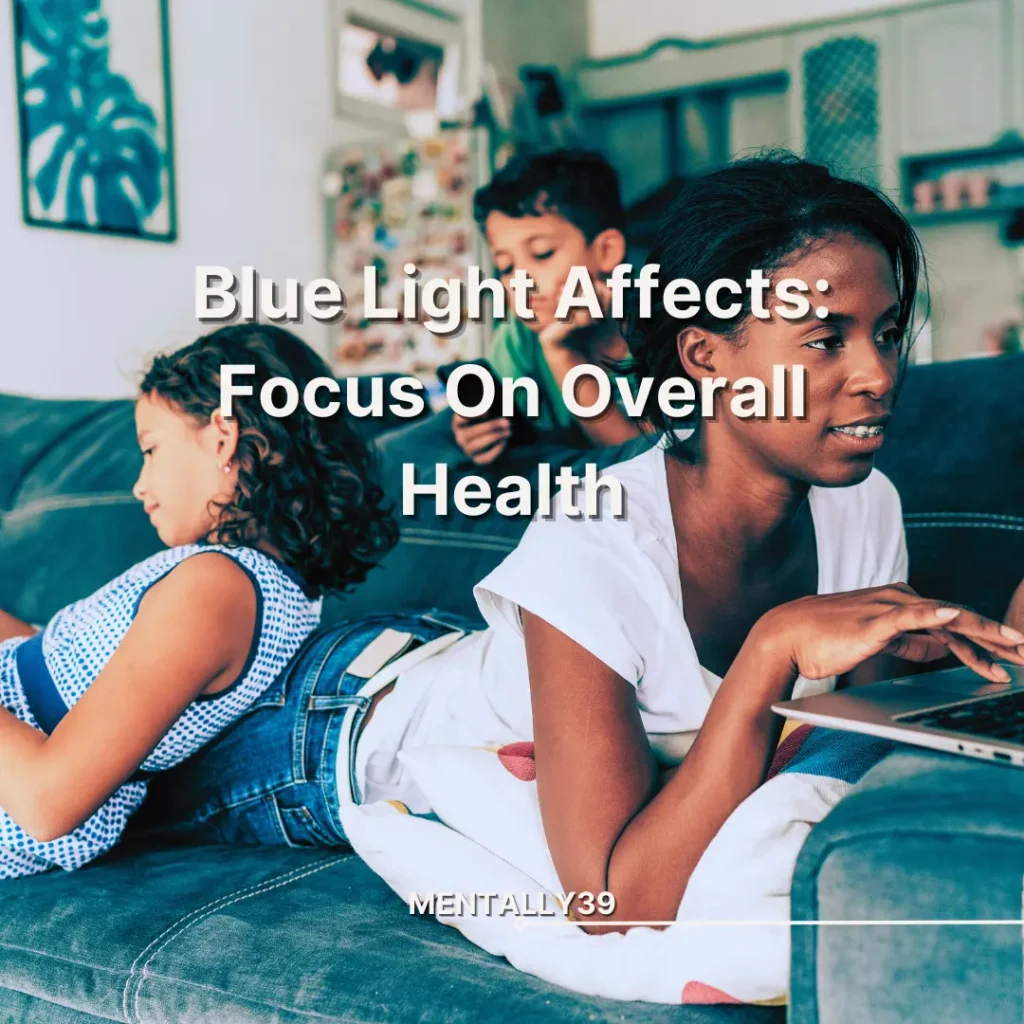With the increasing use of electronic devices, there are growing concerns about the impact of blue light on our eyes and overall health. Too much blue light affects our bodies in different ways. Blue light has a short wavelength and high energy that can pass through the cornea and reach the delicate cells in our retinas. While blue light has important functions, such as regulating our sleep process, enhancing our mood, and improving our cognitive abilities, it also poses potential risks, such as digital eye strain, disrupted sleep patterns, and even long-term damage to our retinal health.
As we continue to use electronic devices and be exposed to their light, it’s important that we take preventive measures and adapt our digital practices. By understanding the nuances of light, we can reduce our exposure to blue wavelength and strike a balance between our technological needs and health requirements.
Key Takeaways
- Blue light is part of the visible light spectrum and is emitted by the sun, electronic devices, and artificial light sources.
- While beneficial in regulating circadian rhythms and improving mood and alertness, exposure to blue light can pose health risks.
- Extended screen time from digital devices is associated with digital eye strain and potential retinal health issues.
- Practices such as using filters, following the 20-20-20 rule, and wearing protective eyewear can help with exposure.
- Understanding the impact of blue light is vital in addressing sleep cycle disruption, melatonin suppression, and the possibility of blue light and sleep disorders.
Exploring the Role of Blue Light in Vision and Health
The effects of blue light on our lives go beyond mere convenience and entertainment. It profoundly impacts our natural wake and sleep cycle, or circadian rhythm. Blue light is present in the sun and artificial sources like screens and energy-efficient light bulbs, making it ubiquitous in our homes and offices. With our increasing dependence on digital devices, we are beginning to understand its full impact on our health and well-being.
Studies have shown that blue light plays a critical role in the release of melatonin, a hormone that signals our bodies to sleep. This highlights the importance of managing our exposure to, especially before bedtime, to improve sleep quality. On the other hand, exposure to blue light during the day can help reinforce a healthy circadian rhythm, enhancing alertness and performance.
It’s not just about its effects on sleep; it’s also a matter of visual health. Prolonged exposure to blue light from electronic devices is linked to a range of age-related vision diseases. Although our eyes can block ultraviolet light, blue light penetrates more effectively, potentially leading to macular degeneration and cataract formation. This is exacerbated by the high energy of this part of the spectrum.
Children are more susceptible to myopia progression because their developing eyes permit more blue light to reach the retina. Therefore, taking preventive measures like using blue light-blocking glasses and adjusting settings to promote blue light protection is important, which may contribute to retinal health. On a side note, as a teacher, please limit your kid’s screen time. Kids are not developing social skills, and one of the primary reasons is that they are addicted to phones and playing games online.
However, it is important to strike a balance between minimizing potential harms and not ignoring the benefits of blue light in areas such as mood elevation and cognitive function.
- Understand blue light’s role in regulating the circadian rhythm for better sleep quality
- Recognize the potential link between blue light exposure and age-related vision diseases
- Consider using blue light protection such as filters or glasses to safeguard against visual impairment
- Changes in screen use habits at night could improve sleep by aligning melatonin release with your natural sleep pattern.
As we continue to learn more about the effects of blue light on our eyes and overall health, it’s important to take proactive steps to protect ourselves. Regular eye exams and a critical approach to our monitor or device usage can go a long way in helping us manage the challenges of our modern, technology-driven world while maintaining our well-being. By staying informed and adapting our behaviors, we can safeguard our health and keep our eyes healthy for years to come. Also, practice the 20-20-20 rule. Every 20 minutes of screen time, look at something that is at least 20 feet away for 20 seconds.
How Blue Light Affects Your Eyes and Body
Did you know that blue light has some pretty unique characteristics? When we explore the visible spectrum, we find that blue light has the shortest wavelength and one of the highest energy levels (second only to ultraviolet light). It’s pretty fascinating stuff! It is present in our daily lives, originating from the sun and also from artificial sources such as LED and fluorescent lights commonly found in our devices and surroundings.
Navigating the Visible Light Spectrum: Blue Light’s Place
Blue light sits between green and violet light on the spectrum and is essential in forming the white light that we see. Its energy levels have an impact on various biological functions and are crucial for maintaining healthy vision. Although the sun is a significant origin of blue light, our modern lifestyle has increasingly associated this energetic wavelength with the illumination of digital and electronic gadgets. This raises questions about the cumulative amount of exposure we receive daily.
The energy levels of blue light are known to impact various biological functions and are essential for maintaining healthy vision. This raises concerns about the total amount of blue light we are exposed to daily.
Potential Long-Term Effects on Eye Health: Cataracts and Macular Degeneration
We all know that we need protection against the sun’s light. Same thing with your devices. Extended exposure to blue light can be harmful to the eyes. Blue light-induced retinal damage is risky and can lead to age-related macular degeneration (AMD) and cataract formation. It is important to reconsider our screen time and take protective measures, such as using eye protection to reduce the risk of these ocular problems. On your laptop or monitor, turn on the night light function; I also do the same on my smartphone. These settings help to block blue light. You can also wear glasses when working that help block blue light.
Blue Light Exposure: Digital Devices Vs. Sunlight
The exposure to sunlight has always been associated with blue light. However, in today’s digital world, we are now faced with a new source of blue light that is much closer to our eyes. The blue light emitted from digital gizmos may not be as strong as sunlight, but due to prolonged exposure, it can have a negative impact on our vision health. Adopting protective strategies such as using blue light filters and limiting our screen time on digital devices is important to maintain optimal vision health.
Conclusion
The article presents research and discussions highlighting blue light’s significant impact on our visual and overall health. As we continue to use devices more frequently, adopting preventive strategies becomes increasingly important. Our daily routines depend heavily on screens, making it essential to prioritize eye care tips that address the concerns raised. Ensuring visual health in such an environment involves more than just understanding the potential risks; it requires taking active steps toward adopting healthy screen habits.
The first step towards improving our visual health is awareness. Being informed about the blue light awareness movement can inspire changes in our screen-centric lifestyle. Proactive ocular health practices such as using blue light filters, following the 20-20-20 rule to alleviate eye strain, and controlling screen brightness can significantly mitigate the adverse effects of excessive screen time. Regular eye checkups are also crucial in detecting and managing potential screen-induced ocular conditions.
Having a healthy relationship with our devices is important for our well-being. Excessive blue light exposure can be harmful, but we can reduce the risk of negative health outcomes. We can do this by staying informed, following eye care tips, and developing healthy screen habits. This will ensure that technology and health can coexist harmoniously in the future.

20+ Years as a Special Education Teacher
NASM Certified Nutrition Coach,
Certified Trauma Informed Trainer
Mindset and Motivation Master Life Coach
